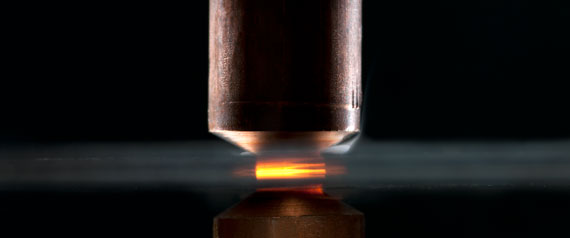Are you welding well with AHSS?
Obtaining strong and consistent welds when joining advanced high strength steel for automotive components is fully possible. There are just a few things to keep in mind.
The short answer – as it always has been – is by welding. However, this process has become a bit more complex.
Not like it used to be
When joining different grades of steel and materials, you cannot simply weld them without a second thought. In particular, multi material bodies require some homework. For example, some materials are more noble than others, and have a tendency to corrode when joined in certain ways. In addition, thermal expansion can vary greatly between two materials, which can quickly compromise the welded or bonded joint as temperatures change. These may seem like obvious challenges, but the point is: the materials used and welding parameters must be much more tightly controlled than in the past.Welding with AHSS
The use of AHSS allows for the creation of lighter and safer automotive components. Docol® AHSS also features exceptional weldability. In fact, it is possible to use conventional welding methods to weld Docol® AHSS to any type of weldable steel.As a general rule when spot welding, however, AHSS steel of the same sheet thickness will need a lower welding current, compared to a soft deep drawing steel grade due to the higher electrical resistance.
When developing steels at SSAB, weldability is one of the key properties. Researchers work closely together with welding engineers trying to keep alloying elements on a low level, and to produce steel with unique cleanliness. Consistency is also of overall importance to make sure the automated assembly lines are free of disturbances and each weld fulfills high quality requirements.
The clean nature and high consistency of Docol® AHSSS translates to better weld quality overall, which can have a positive effect in a crash situation.
The right parameters
Obtaining excellent welding results with AHSS all comes down to the right parameters. To help, SSAB has published a Welding Handbook, a comprehensive overview of welding with Docol® AHSS including parameters and recommendations for all conventional welding methods used in the automotive industry.
Often it is difficult to give general advice for specific cases when joining two materials together. For additional questions and advice, the SSAB Knowledge Service Center has the goal of helping customers with support and services that span the entire development chain, of which welding is one of our focus areas. SSAB has many different welding engineers and labs with the competence to provide accurate advice on all welding issues related to AHSS.
Be informed
Weldability never has to be a deciding factor when evaluating AHSS for automotive applications, but you should have the right material information. The good news is that the information and assistance you need is close to hand.



